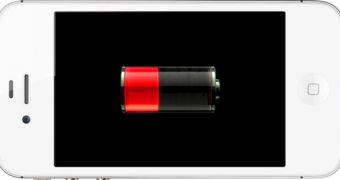If there’s one common complaint you’ll always find after an iOS update is released it’s battery drain. According to one former Apple staffer, “Users will report poor battery life after every iOS update. Always. For eternity. This is not newsworthy.”
Yet every iOS update spurs headlines that Apple is messing up in the power management department. So what’s going on? Well, apparently the range of potential factors is so wide you have to pinpoint your exact cause, which may differ from the problem of the guy to your left, or the gal on your right.
A good way to see if something is wrong is to test your usage and standby time, according to Scotty Loveless, former Apple Genius.
“So here's the test: write down your usage and standby time, press the sleep/wake button (or lock button, as some call it) to put the device to sleep, and set the device down for five minutes. When you come back, take note of the change in time.”
“If your device is sleeping properly, then the Standby time should have increased by five minutes and your Usage time by <1 minute . If your Usage time rises by more than one minute, you have a drain problem. Something is keeping your device from sleeping properly, significantly shortening the time it will last,” Loveless explains.
His lengthy post also includes the main causes behind iOS battery drain, each with a tip that may help resolve the problem. Loveless is not an advocate for turning off every feature that might drain the battery, as it beats the purpose of having a powerful smartphone in your pocket. However, he does encourage users to toggle some features on and off and see which one is the culprit.
Users are advised to disable Location Services and Background App Refresh for Facebook (and see what happens) and disable Background App Refresh for apps they don't care about. Loveless also says people should stop quitting their apps in multitasking. According to the former Apple Genius, quitting apps doesn’t help the situation, it actually makes it worse.
“By closing the app, you take the app out of the phone's RAM. While you think this may be what you want to do, it's not. When you open that same app again the next time you need it, your device has to load it back into memory all over again,” he explains.
“All of that loading and unloading puts more stress on your device than just leaving it alone. Plus, iOS closes apps automatically as it needs more memory, so you're doing something your device is already doing for you. You are meant to be the user of your device, not the janitor.”
Users might also want to try to disable Push Email temporarily (and see how it goes from there), disable Push Notifications for annoying apps (why not delete them altogether if they’re already unwanted?), and turn off battery percentage. Loveless explains:
“One thing I found in my Genius Bar experience is that people that are anxious about their iOS device battery life are constantly checking it to see the percentage and how much it has dropped from the last time they checked it. So if you check your device twice as much, simply to check on the battery life, you are essentially halving the time your device will last.”
A visit to the Apple Retail Store is also encouraged, as the Cupertino giant now offers a new “Extended Battery Life Test” that allows technicians to see a detailed report of battery usage on the device. One final piece of advice is to enable Airplane Mode in areas with poor signal.

 14 DAY TRIAL //
14 DAY TRIAL //